Introduction
Understanding the architecture of Magento 2 is crucial for building a robust e-commerce platform. In this article, we explore the modular structure of Magento 2 and its various components. We also discuss the importance of adhering to coding standards, optimizing performance, enhancing security, and customizing Magento 2 to meet specific business needs.
Additionally, we delve into the significance of omni-channel integration, UI/UX design, and responsive development. Finally, we highlight the benefits of choosing the right Magento 2 development company and the value of customized solutions in the highly competitive e-commerce landscape. Join us as we provide expert advice and recommendations on maximizing the potential of Magento 2.
Understanding Magento 2 Architecture and Components
Understanding the structure of the 2 platform is a crucial step in creating a strong e-commerce system. When observing the digital payment solutions industry, as demonstrated by Nets, the display of intricate technical information can have a substantial impact on engagement. By converting technical information into easily understandable and interactive formats, Nets effectively encouraged users to actively explore their offerings, a practice that can be mirrored in the development of the second version of the platform.
The modular structure of the e-commerce platform, Magento 2, is designed to enhance flexibility and scalability. Each component—database, application code, themes, and modules—plays a critical role, much like the distinct layers in software architecture models like MVC (Model, View, Controller) and the C4 model (Context, Containers, Components, Code). These components must be understood and managed in harmony to ensure a seamless and efficient development process.
For example, the Model in MVC, which represents the data and business logic, corresponds to the database and application code of the system, forming the foundation of its functionality. Similarly, the themes and modules of the e-commerce platform can be likened to the View and Controller, defining the user interface and handling the user's interactions with the system, respectively.
In the context of the expansion of the online shopping market, as demonstrated by the penetration of mobile commerce and diverse product markets like beverages and food, the ability to customize and adapt your software becomes even more valuable. It's not just about having an online presence; it's about tailoring that presence to the unique requirements of your target audience, much like the approach taken by Nets to meet the specific needs of their clients across different markets.
By incorporating these insights into the development of an e-commerce framework like Magento 2, businesses can build more user-friendly and efficient online shopping systems. This approach aligns with the latest advancements in technology, such as the utilization of the CKEditor for web content editing or Laravel for web application development, ensuring that the system remains competitive and relevant in a rapidly evolving digital landscape.
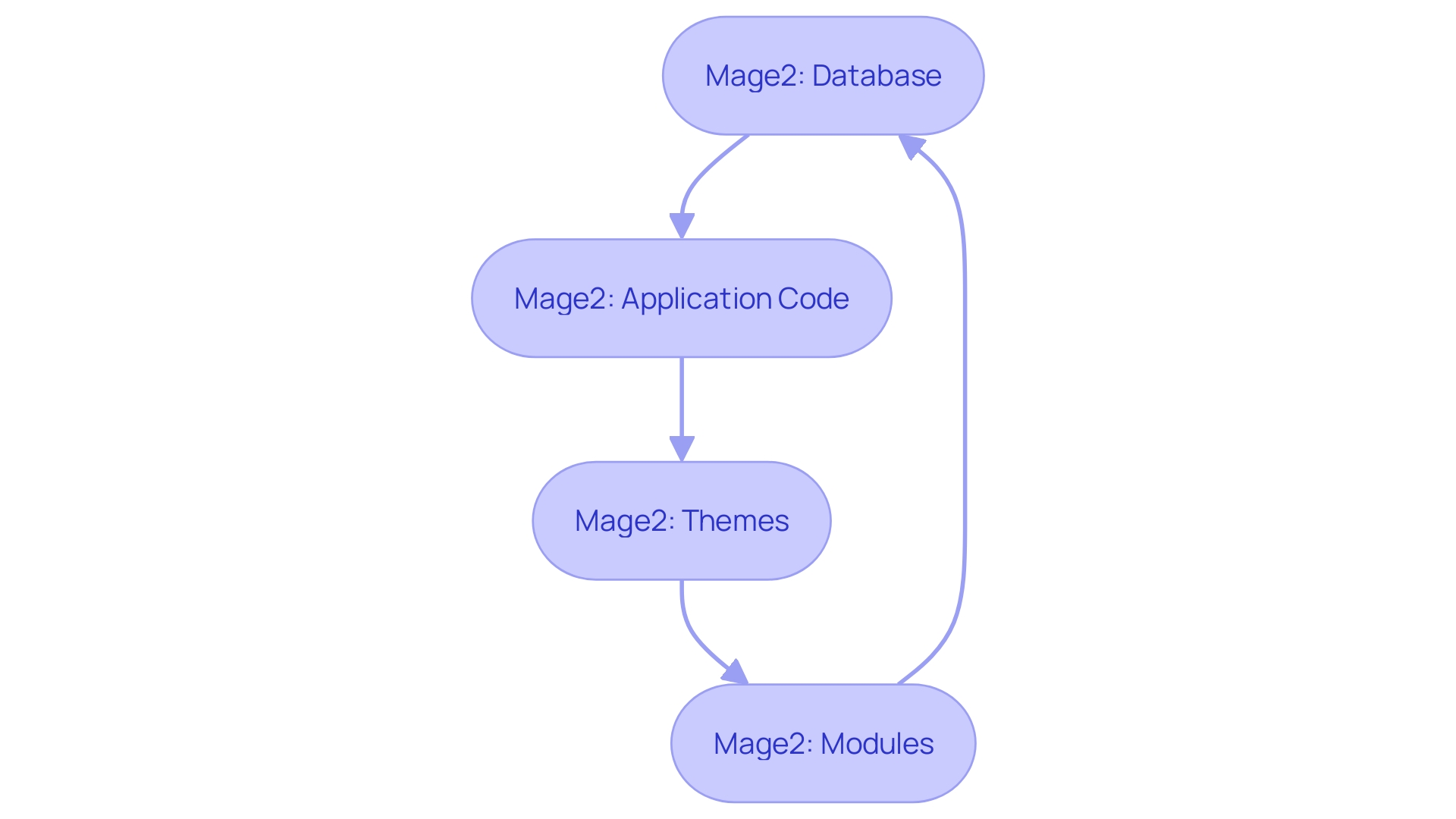
Coding Standards and Module Development
Sustaining a high standard in 2 development is not only good practice; it's a cornerstone for building a reliable and robust e-commerce platform. As you develop custom modules, it's critical to adhere to the established coding standards and guidelines of the platform. Doing so ensures that your code is not only efficient and secure but also future-proof against updates.
Nets, a veteran in the digital payment solutions space, encountered a similar challenge when presenting technical data. Their goal was to make complicated information accessible and captivating for individuals. Similarly, in development for e-commerce platforms, presenting data through clean, well-structured code is vital for both maintainability and user engagement.
Furthermore, industry leaders like Mark Shust, a seasoned Adobe Commerce Certified Developer, emphasize the importance of clean code for enhancing readability and maintainability. His approach to e-commerce development aligns with the best practices that every developer should aspire to follow.
In the fast-paced world of e-commerce, where the speed of delivery and the quality of software are paramount, the importance of clean code cannot be overstated. Research has shown that code quality directly impacts speed-to-market and defect rates. High-quality code can therefore be a significant business advantage, as demonstrated by M& T Bank's commitment to establishing Clean Code standards across its organization.
With the continuous evolution of best practices and coding standards, learning from the expertise of seasoned developers is invaluable. Incorporating their techniques can elevate the quality of your work, benefiting not just your immediate project but your professional reputation in the long run.
By adopting these practices, you're not only streamlining your future work but also preparing your 2 projects for success, ensuring they are scalable, maintainable, and aligned with the latest industry standards.
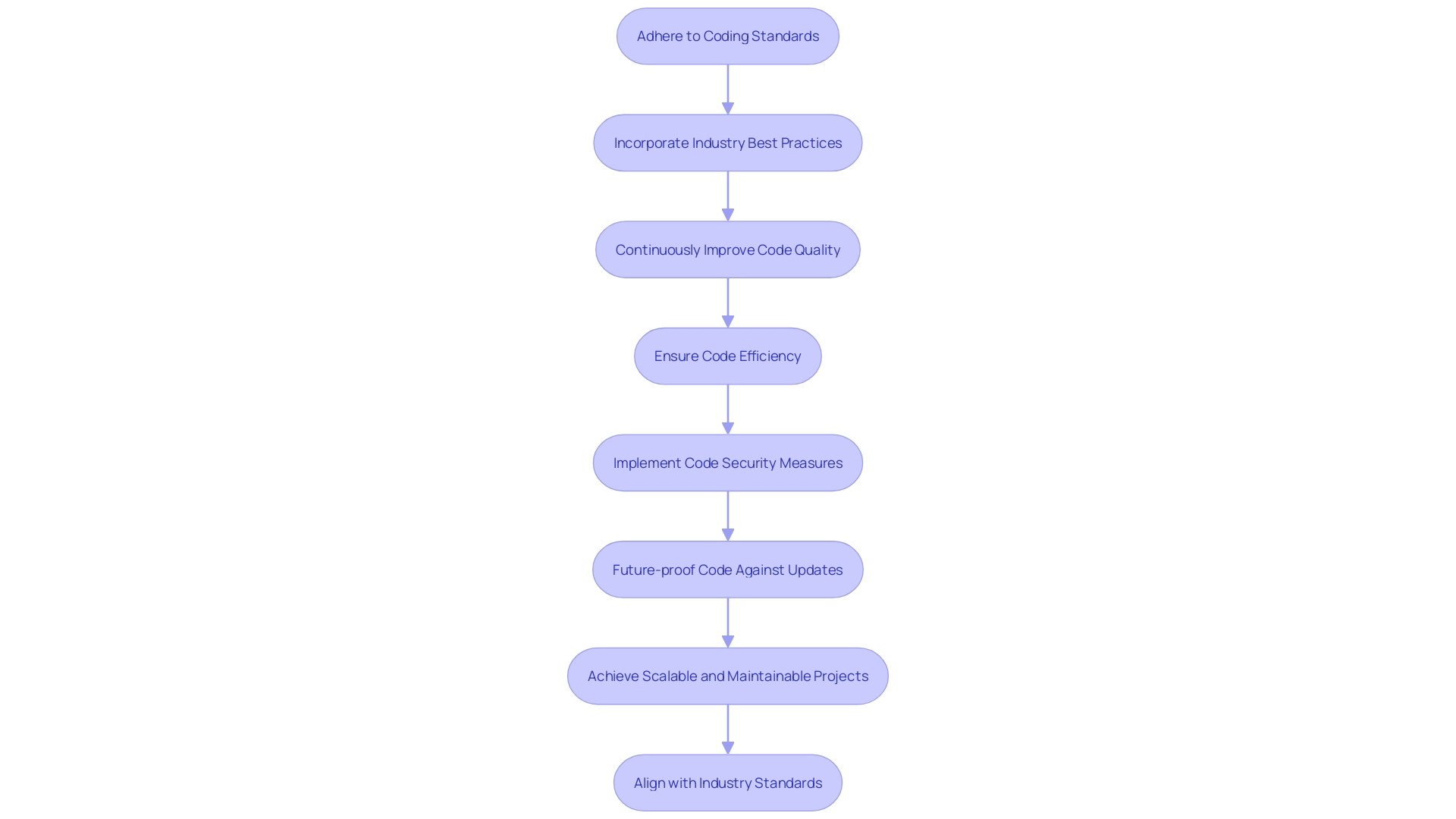
Performance Optimization Techniques
Enhancing the performance of your Magento 2 site is not only about keeping up with technology, but also about providing the seamless experience that individuals anticipate. Begin by utilizing full-page caching, which can greatly diminish page generation time, a crucial element in how swiftly content shows up to individuals. The utilization of object caching and database optimization methods can also result in quicker response times, enhancing the overall experience of individuals.
Images play a pivotal role in attracting and retaining customer attention. Strike the right balance between high-quality visuals and load speed by implementing optimized image delivery strategies. This ensures that product images are clear and load quickly, encouraging people to explore more and ultimately increasing conversion rates.
Regularly monitoring key web performance metrics, like First Contentful Paint (FCP), is crucial. It helps pinpoint potential bottlenecks that could be slowing down your site. By continuously analyzing and refining your website's performance, you ensure that speed and reliability align with user expectations, thereby bolstering your online presence and enhancing customer engagement.
Remember, a few seconds' delay in load time can lead to a substantial loss in revenue. With online operations forming the backbone of many businesses, especially during peak seasons, it's evident that a well-optimized website can be a game-changer, leading to increased visibility, customer engagement, and higher sales conversions.
Security Enhancements and Best Practices
Enhancing the security of a web-based shopping system like Magento 2 is not just about following best practices; it's about cultivating a security-first mindset within the development team. Regular security training is crucial, as it equips the team with knowledge of the latest threats and best practices to mitigate them. For instance, M&T Bank tackled the evolving cybersecurity landscape by establishing Clean Code standards to maintain the integrity and performance of their software.
Furthermore, it's crucial to keep the platform's 2 installation updated with the latest security patches. As per a TechTarget report, only 52% of companies can effectively remediate a critical vulnerability, highlighting the importance of timely updates. Secure coding practices are also vital to prevent common vulnerabilities like SQL injection and cross-site scripting, which can be a part of systemic vulnerability classes that organizations like CISA aim to reduce through initiatives like Secure by Design.
Additionally, implementing SSL certificates and secure payment gateways is fundamental to ensuring secure transactions. This is especially important given that recent research by Silverfort and Osterman Research showed that 83% of organizations have suffered data breaches due to compromised credentials.
Performing regular security audits and vulnerability scans is another best practice to identify and mitigate potential risks. The banking sector's digital transformation underscores the need for stringent security measures, as software with vulnerabilities can lead to financial losses and reputational damage.
In the end, these security practices should be deeply embedded in the development process to build strong and secure digital marketplaces that resist the numerous cyber risks widespread today. By doing this, developers of the Magento 2 platform can create a more secure online atmosphere for both the platform and its customers.
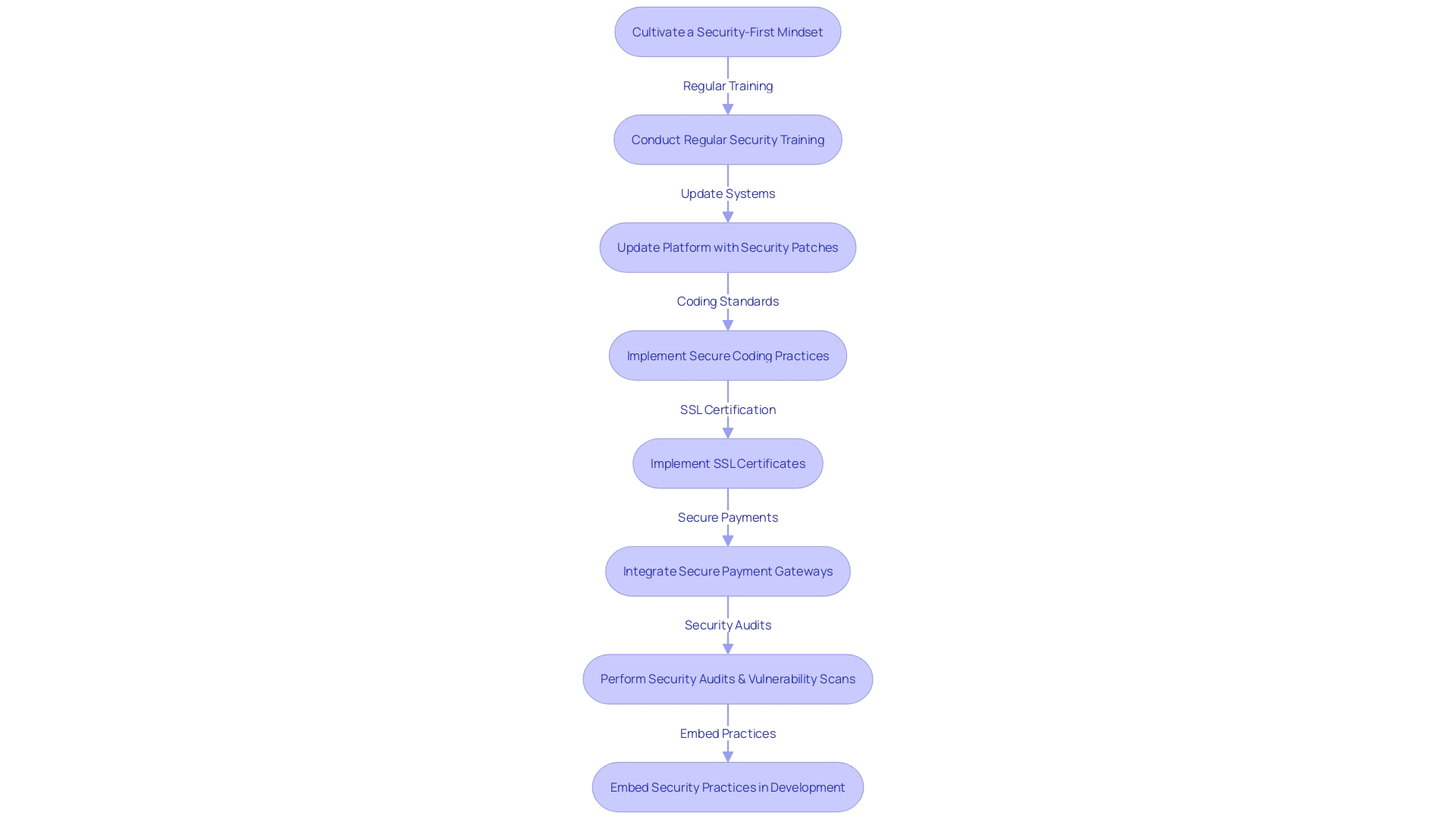
Choosing the Right Magento 2 Development Company
Choosing a 2nd generation e-commerce development collaborator is a choice that can determine the course of your online business. Aim to identify a development agency that not only showcases a robust portfolio of Magento 2 solutions but also demonstrates a keen insight into the specific needs of your business. The expertise of the development team should align with your strategic goals, be it lead generation or reinforcing your brand's digital presence.
A case in point is Nets, a prominent digital payment solutions provider, which faced the intricate challenge of presenting technical data in a user-friendly manner. By collaborating with a development company that understood their unique requirements, Nets was able to reinvent information presentation in a compelling way, fostering user engagement and self-driven discovery. Karmela Peček of eWyse Agency highlighted the importance of transforming complex data into accessible formats to meet compliance training needs within the financial sector.
When exploring potential partners, it's essential to delve into their technical capabilities, work methodologies, and management expertise. The right questions can reveal the depth of the company's experience and their capacity to deliver results that resonate with your objectives. Furthermore, with a rise in open-source online trading systems, choosing a collaborator who can navigate this environment is more important than ever.
Ultimately, the combination of your business expertise with the technical skills of an experienced Magento 2 development firm can lay the foundation for a thriving online business. This synergy is exemplified by industry leaders who emphasize the importance of focus, passion, and customer-centricity, as articulated by venture capitalist Lavelle. The ultimate goal is a partnership that thrives on clear communication and a shared vision for your project's success.
Importance of Omni-Channel Integration
To excel in the ever-changing realm of online business, retailers must master the art of Omni-channel integration. This strategy is not just a buzzword; it's a customer-centric approach that has become a linchpin for success in the digital era. With the blending of online and offline shopping experiences, businesses like MediaMarkt demonstrate the power of creating a seamless ecosystem that caters to today's channel-agnostic consumers. They offer the convenience of buying online with the option to pick up in-store, reflecting a consumer behavior shift where the lines between digital browsing and physical purchasing are increasingly blurred.
Incorporating tools for real-time data synchronization and comprehensive inventory management is crucial for maintaining consistency across multiple channels. By leveraging customer data, retailers can personalize interactions, enhancing engagement and loyalty. Just as the checkout-free store in Dublin Airport represents innovation in retail systems, offering a frictionless purchase process, e-commerce businesses must integrate similar technologies to stay ahead. The goal is to provide a unified shopping experience, whether customers are on a mobile app, browsing a website, or walking into a brick-and-mortar location.
Statistics underscore the importance of this integrated approach, with Forrester reporting that 60% of all sales are now digitally influenced. This shift is a testament to the evolution of consumer habits and the need for retailers to adapt accordingly. As Anil Menon, Chief Information Officer at Lulu Group India, puts it, 'Omnichannel is simply about being available for the customer when and where they want it.' It's clear that the future of retail hinges on the ability to merge the digital with the physical seamlessly, ensuring that every touchpoint is an opportunity to connect with and serve the customer.
UI/UX Design and Responsive Development
To engage and keep customers on your Magento 2 platform, the success relies not only on the products you offer but also on the interface (UI) and experience (UX) of your website. A stellar UI/UX design is akin to telling a personal story, much like the portfolio site created by Artemii Lebedev for the film industry, which reflects the unique vision and emotion while being functionally sound with repeatable patterns across pages.
Emphasizing responsive design is non-negotiable, as it ensures your website delivers a seamless experience whether accessed via desktop, mobile, or tablet. Take into account the statistics: more than 50% of individuals will not make a purchase from a brand with a poorly designed mobile site, and a load time of two seconds can boost conversion rates by 15%.
Consistently improving your website based on feedback is crucial. As designers obsess over removing friction points, it's essential to adopt an evolutionary design approach, implementing incremental improvements that resonate with users' needs. Radical redesigns should be reserved for when comprehensive conversion research highlights critical weaknesses.
Remember, aesthetics are paramount, and the latest trends, such as animated typography and dynamic layouts, can turn a simple website into an engaging experience that entices visitors and potentially increases conversion rates. With the average ecommerce conversion rate as a benchmark, strive to exceed the norm and aim for the top percentile to stand out in the digital realm.
Best Practices for Customizing Magento 2
Customizing your 2 platform to align with specific business requirements is a strategic move that can enhance your eCommerce operations significantly. It's important to adopt a mindful approach to customization, ensuring that the changes you make are not only efficient and maintainable but also remain compatible with the ecosystem's ongoing evolution.
When replatforming, it's crucial to consider the migration of essential data such as product details, customer information, and historical orders. However, this process should also be seen as an opportunity to reassess and optimize your online business strategy. By leveraging new technologies, you can elevate the customer experience, streamline operations, and position your business for greater innovation and growth.
As the eCommerce landscape continues to evolve, with the global B2B eCommerce market predicted to grow substantially, the adoption of advanced tools like Business Intelligence becomes imperative. This cloud-based analytics platform aids in collecting, analyzing, and visualizing data, offering actionable insights that drive smarter business decisions.
Moreover, the eCommerce industry is witnessing rapid changes with trends such as the use of artificial intelligence to personalize shopping experiences. With these advancements, it's important to make sure that your customizations for the platform are thoroughly tested and validated to prevent conflicts and ensure a seamless experience for your users.
Use themes and extensions wisely to implement desired changes and consider developing custom modules in accordance with the best practices of the platform. This strategic blend of customization, data-driven decision-making, and trend adoption will fortify your platform's capability to deliver an unparalleled shopping experience.
Common Pitfalls and Quality Control in Customization
Customizing a particular ecommerce platform requires a strategic approach to avoid common pitfalls that can lead to conflicts, performance issues, and security vulnerabilities. To ensure customizations are error-free and meet the highest standards of quality, it's critical to implement a robust process that incorporates thorough testing in a staging environment. This approach was exemplified by a client who needed a complex label system, allowing for a shared pool of documents accessible across various editorial teams. The introduction of specialized stages for regulation, staging, and integration demonstrates the importance of structured quality control.
Incorporating a version control system is essential for tracking changes and facilitating a smooth rollback if issues arise. By following the methods observed in successful projects, such as thorough regulatory checks and testing phases, you can strengthen your 2 customizations against potential risks.
Moreover, recent discussions in the industry, like the Library Futures Blog Post on digital book ownership, highlight the value of establishing trust. This principle can be applied to online business customizations, emphasizing the significance of dependable and credible development practices.
Adeptly managing Magento 2 customizations also involves being mindful of the broader e-commerce landscape. With the B2B eCommerce market projected to grow significantly, it's crucial to ensure that your customizations not only perform flawlessly but also contribute to a seamless user experience across various systems.
Lastly, the importance of quality cannot be overstated. As industry experts have noted, quality is about meeting specific attributes or requirements, and this holds true for digital platforms as well. By implementing careful code reviews and quality assurance processes, you can ensure that your 2 customizations are synonymous with excellence and reliability.
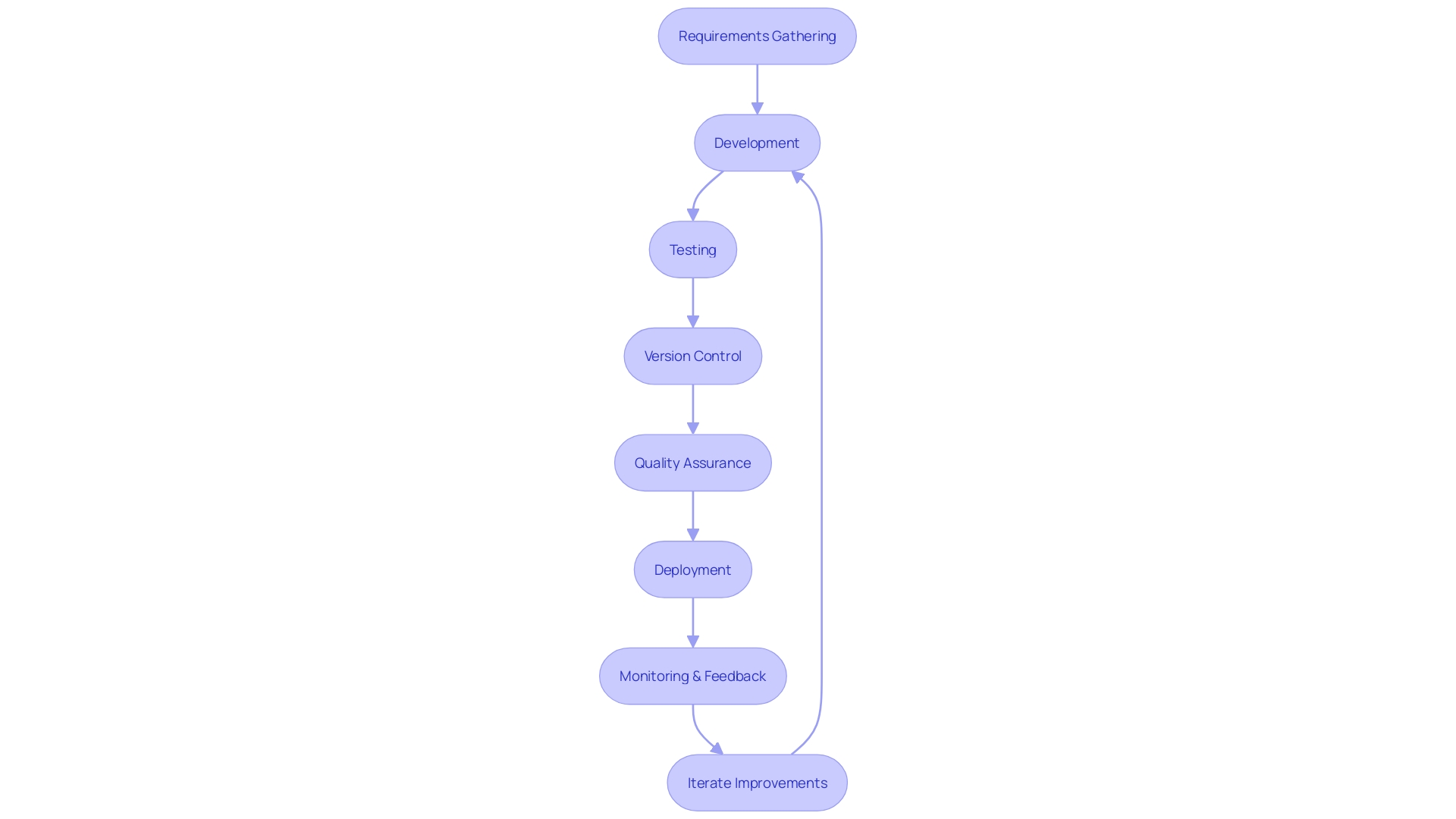
Benefits of Customized Magento 2 Solutions
Utilizing personalized e-commerce solutions is crucial for businesses aiming to differentiate themselves in a crowded digital marketplace. By tailoring the Magento 2 platform to align with a company's unique requirements, businesses can cultivate a distinctive online presence. Customization empowers merchants to incorporate desired features, amplify the user experience, and streamline operational workflows, leading to enhanced customer satisfaction and loyalty. More than just a visual improvement, these custom-made solutions enable smooth integration with different third-party systems, ensuring a cohesive online trading environment that operates efficiently.
The importance of personalized online shopping experiences cannot be overstated. Consumers today are inundated with options, making it essential for brands to deliver a shopping experience that not only meets but exceeds expectations. Custom web solutions enable businesses to craft a digital space that reflects their brand identity and resonates with their target audience. This strategic approach is evident in the success stories of companies like Nets, who have masterfully presented complex technical data in an engaging manner to foster user engagement.
Moreover, the advent of innovative retail technologies, such as the checkout-free store utilizing Zippin technology at Dublin Airport, underscores the importance of a frictionless shopping experience. Tailor-made solutions for a specific e-commerce platform can incorporate comparable state-of-the-art features, ensuring businesses stay ahead in retail innovation.
In today's e-commerce landscape, where over 2.14 billion people are expected to shop online, the ability to provide a flawless shopping journey is paramount. A deep understanding of business needs, coupled with a partnership with a development team possessing industry-specific expertise, lays the groundwork for successful custom software development. Such collaborations result in software that not only aligns with business objectives but also drives revenue growth and scalability, as highlighted by industry leaders like Shopify.
By investing in custom Magento 2 development, businesses can harness the power of personalization to deliver compelling user experiences, ultimately fostering brand loyalty and securing a competitive advantage in the digital economy.
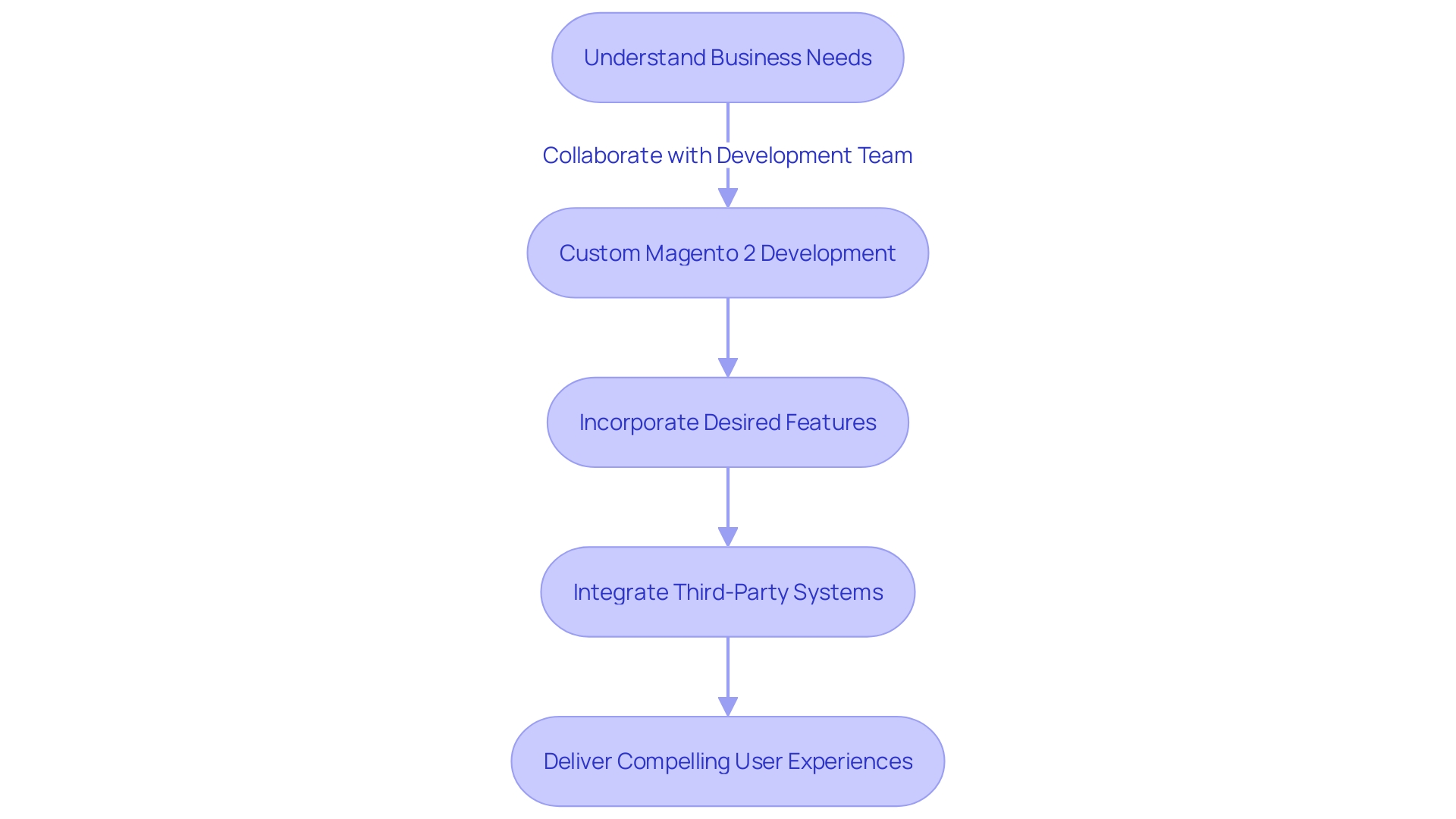
Conclusion
In conclusion, understanding Magento 2's architecture and adhering to coding standards are crucial for building a robust e-commerce platform. Optimizing performance, enhancing security, and choosing the right development company are essential for success.
Omni-channel integration, UI/UX design, and responsive development are key to captivating customers and increasing conversions. Customizing Magento 2 to meet specific business needs and utilizing advanced tools like Magento Business Intelligence can drive smarter decisions and enhance the user experience.
Thorough testing, version control, and a focus on quality ensure reliable and trustworthy customizations. Leveraging customized Magento 2 solutions can set businesses apart in a crowded marketplace, leading to customer satisfaction and loyalty.
By following these expert recommendations, you can maximize the potential of Magento 2 and create a successful e-commerce platform.
Start building your reliable and trustworthy e-commerce platform today!





